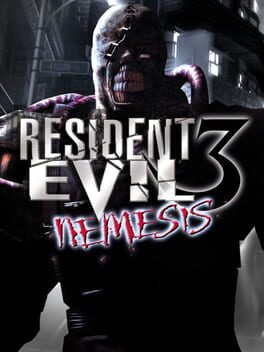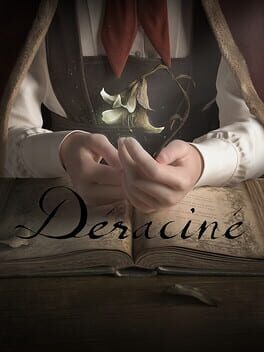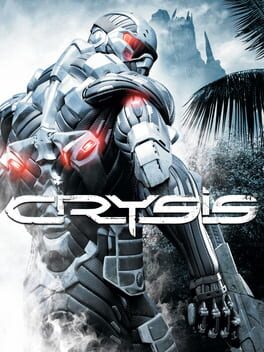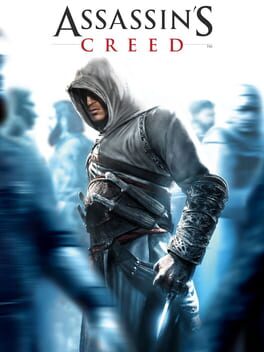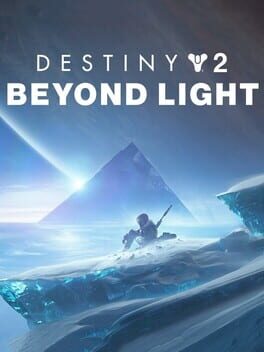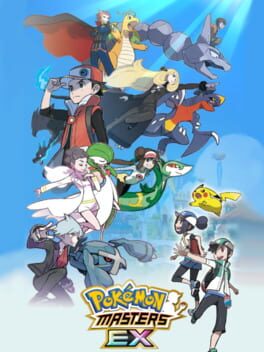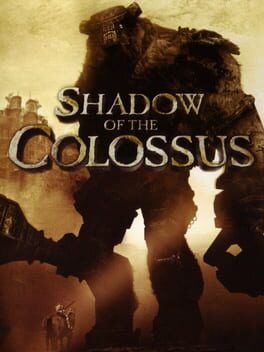emfromthesea
2023
A wonderfully moody game that sees you exploring the nightlife of a crumbling, post-Soviet cityscape. Diegetic music and radio broadcasts invite you to encounters with strangers all in search of their own place in an indifferent universe. Where other experiences may become overbearingly nihilistic, Neyasnoe manages to find warmth in the pockets of life people have carved out as respite from the cold and dark. You share a smoke and ruminate on the state of things. You attend a poetry recital amongst friends. You drink and dance like fools into the fleeting night. What else is there to do at the end of days?
2021
Underneath all of the detritus commonly found in mobile gaming and games-as-a-service models there is undeniably something compelling in Pokémon Unite. Though I only played as a couple of the characters on the sizable roster I quickly found an impressive depth to its systems and competitive rulings. Like other MOBAs the interplay between various characters and the roles they fulfil creates a great deal of variety in matches despite repeating objectives and environments. I am not someone particularly well versed in this genre of games but I nevertheless found it fairly easy to grasp. In that way it’s quite the approachable and friendly experience for a space of gaming that has a reputation for being rather noxious.
However, it is not long before one discovers a more insidious side to Unite that is only further exemplified by the Pokémon brand’s history of marketing towards children. That, of course, is the monetization that rears its head in almost every part of this game. This is possibly the most egregious nickel-and-diming I’ve seen for a hot minute, with everything from the playable characters, the cosmetics for those characters and your avatar, and boosters for the various currencies all funnelling into an ecosystem that will frequently remind you of the option to purchase these things with real money. This isn’t exactly new as far as free-to-play games go but what makes this an exception in my eyes is just how much money one could easily lose to Unite in a few innocuous purchases. Several of the higher tier cosmetics for the pokemon can cost obscene amounts of money. Want a Christmas-themed outfit for your Pikachu? That’ll be 2999 aeon gems, or, £45. There’s even a subscription one can pay to get access to a paltry sum of premium awards and a few of the cosmetic items on loan. Yes, a lot of the ecosystem seems to work by providing you characters or cosmetics for a brief window before yanking them away, as if to incentivise you into paying to keep hold of a character/outfit you had previously become attached to.
Though there does not appear to be anything in the game that could be described as “pay to win” in terms of giving you an edge against real players in the online matches, the abundance of quirky cosmetics one can outfit their favourite pokemon with is undoubtedly part of what Unite builds its aesthetic appeal on and I cannot simply write off these items as additional (expensive) goodies for those so inclined. It’s grossly exploitative of both the younger audience that will show up to anything with the Pokémon name attached to it and players for whom struggle with compulsions towards gambling or impulse purchases. It is a shame, then, that the inviting design of Unite I mentioned earlier feels almost like a trap to bring you into an ecosystem that so desperately wants to drain your income for all you’re worth. Most folks I imagine would get on fine and find something to enjoy in Unite, but it is the audience who can’t say no to handing over their money that keeps an enterprise like this afloat. Perhaps someday in the future when the online services of this game are taken down and you’re left with bot matches encased in the shell of a dead game you’ll be able to garner some impression of what made the core of this compelling, but for now I can’t recommend the experience of playing Unite when it’s marred by rotten business.
However, it is not long before one discovers a more insidious side to Unite that is only further exemplified by the Pokémon brand’s history of marketing towards children. That, of course, is the monetization that rears its head in almost every part of this game. This is possibly the most egregious nickel-and-diming I’ve seen for a hot minute, with everything from the playable characters, the cosmetics for those characters and your avatar, and boosters for the various currencies all funnelling into an ecosystem that will frequently remind you of the option to purchase these things with real money. This isn’t exactly new as far as free-to-play games go but what makes this an exception in my eyes is just how much money one could easily lose to Unite in a few innocuous purchases. Several of the higher tier cosmetics for the pokemon can cost obscene amounts of money. Want a Christmas-themed outfit for your Pikachu? That’ll be 2999 aeon gems, or, £45. There’s even a subscription one can pay to get access to a paltry sum of premium awards and a few of the cosmetic items on loan. Yes, a lot of the ecosystem seems to work by providing you characters or cosmetics for a brief window before yanking them away, as if to incentivise you into paying to keep hold of a character/outfit you had previously become attached to.
Though there does not appear to be anything in the game that could be described as “pay to win” in terms of giving you an edge against real players in the online matches, the abundance of quirky cosmetics one can outfit their favourite pokemon with is undoubtedly part of what Unite builds its aesthetic appeal on and I cannot simply write off these items as additional (expensive) goodies for those so inclined. It’s grossly exploitative of both the younger audience that will show up to anything with the Pokémon name attached to it and players for whom struggle with compulsions towards gambling or impulse purchases. It is a shame, then, that the inviting design of Unite I mentioned earlier feels almost like a trap to bring you into an ecosystem that so desperately wants to drain your income for all you’re worth. Most folks I imagine would get on fine and find something to enjoy in Unite, but it is the audience who can’t say no to handing over their money that keeps an enterprise like this afloat. Perhaps someday in the future when the online services of this game are taken down and you’re left with bot matches encased in the shell of a dead game you’ll be able to garner some impression of what made the core of this compelling, but for now I can’t recommend the experience of playing Unite when it’s marred by rotten business.
2021
Disappointing at every step. The fleeting moments of enjoyment I get while playing only serve to highlight how many missed opportunities and confusing decisions there are here. Live-service games in this state will always come with the promise that they may one day turn the ship around, but until that day may come, the experience of 2042 is one big bummer.
When I started down the road of playing the nascent entries in the Resident Evil series last year, I wasn’t sure what I was going to make of the oft-maligned ‘tank controls’ or how easy of a time I’d have adjusting given their presence in gaming has largely been forgotten in the 21st century, even by the aforementioned franchise. To my surprise, I found the original Resident Evil (and later, the 1998 sequel) gave a compelling argument for how this kind of input benefits a tense, brooding atmosphere by limiting the ease at which the player can move through the environment and respond to immediate threats. I think both games largely hold up very well and I was all too eager to jump into the third entry, Nemesis, after becoming well acquainted with the titular character through his appearance in the asymmetrical horror game Dead by Daylight.
Unfortunately, I think Resident Evil 3: Nemesis begins to show where the breaking points are for ‘tank controls’ and that is in its move towards an increasingly action-driven pacing that is cause for frustration more often than the desired nerves of a survival horror experience. Prior games in the series would lean on a scarcity of resources as just one of the ways to put pressure on the player, forcing you to make decisions based on how much health/ammo supplies you can afford to expend. RE3, however, showers you with numerous resources right out of the gate (even on the higher difficulty option) and balances this out by also increasing the number of enemies tenfold. What this results in is a far greater sum of encounters where the player is forced to violently fight their way past foes, simultaneously desensitising you to the horror and further exposing the weaknesses of the control scheme. Though some additions have been made to the movement options at your disposal (namely a new dodge mechanic) these ultimately only complicate matters by increasing the room for error during combat. I can’t count the number of instances where I accidentally had Jill perform a dodge roll into an area where my camera/aim was completely obscured.
This is also where the main attraction of the game, that being the constant looming threat of the Nemesis, collides with systems that can’t support the dynamic style of play it should result in. While I did think the inclusion of a boss monster that would pursue Jill area-to-area was genuinely novel, too often the choice of whether to engage Nemesis was decided on the basis of how much of an annoyance the fight would be. Instead, Nemesis becomes somewhat of a non-entity until specific sequences where you are forced to fight him. Despite appearing in most every game in the franchise I don’t think the boss fights are ever Resident Evil’s strong suit, and here they are especially troublesome given the aforementioned conflicts with the control scheme. Having said that, the handful of moments where the narrative will diverge due to a choice coinciding with the appearance of Nemesis were a welcome surprise that meant my own playthrough differed in some interesting ways to that of my partner’s. It was another instance of a novel concept that demonstrated an interest on Capcom’s part to experiment with what Resident Evil could be.
If nothing else, I think the experience proved to be an interesting time capsule harkening back to a period in the series’ history where the identity of Resident Evil was going through a metamorphosis. Though I can’t bring myself to loathe the game in spite of how frustrating I found it at times, I have to say I am relieved that this will be the last entry I’m playing on the PS1 given the aspirations the series had for a greater action/shooter bent on the survival horror genre moving forward. In that sense I am quite curious to see Capcom push this angle to its own breaking point before retreating back to something resembling classic Resident Evil during these past few years.
Unfortunately, I think Resident Evil 3: Nemesis begins to show where the breaking points are for ‘tank controls’ and that is in its move towards an increasingly action-driven pacing that is cause for frustration more often than the desired nerves of a survival horror experience. Prior games in the series would lean on a scarcity of resources as just one of the ways to put pressure on the player, forcing you to make decisions based on how much health/ammo supplies you can afford to expend. RE3, however, showers you with numerous resources right out of the gate (even on the higher difficulty option) and balances this out by also increasing the number of enemies tenfold. What this results in is a far greater sum of encounters where the player is forced to violently fight their way past foes, simultaneously desensitising you to the horror and further exposing the weaknesses of the control scheme. Though some additions have been made to the movement options at your disposal (namely a new dodge mechanic) these ultimately only complicate matters by increasing the room for error during combat. I can’t count the number of instances where I accidentally had Jill perform a dodge roll into an area where my camera/aim was completely obscured.
This is also where the main attraction of the game, that being the constant looming threat of the Nemesis, collides with systems that can’t support the dynamic style of play it should result in. While I did think the inclusion of a boss monster that would pursue Jill area-to-area was genuinely novel, too often the choice of whether to engage Nemesis was decided on the basis of how much of an annoyance the fight would be. Instead, Nemesis becomes somewhat of a non-entity until specific sequences where you are forced to fight him. Despite appearing in most every game in the franchise I don’t think the boss fights are ever Resident Evil’s strong suit, and here they are especially troublesome given the aforementioned conflicts with the control scheme. Having said that, the handful of moments where the narrative will diverge due to a choice coinciding with the appearance of Nemesis were a welcome surprise that meant my own playthrough differed in some interesting ways to that of my partner’s. It was another instance of a novel concept that demonstrated an interest on Capcom’s part to experiment with what Resident Evil could be.
If nothing else, I think the experience proved to be an interesting time capsule harkening back to a period in the series’ history where the identity of Resident Evil was going through a metamorphosis. Though I can’t bring myself to loathe the game in spite of how frustrating I found it at times, I have to say I am relieved that this will be the last entry I’m playing on the PS1 given the aspirations the series had for a greater action/shooter bent on the survival horror genre moving forward. In that sense I am quite curious to see Capcom push this angle to its own breaking point before retreating back to something resembling classic Resident Evil during these past few years.
2020
2008
Despite coming away from the original Crysis fairly lukewarm on the experience I have to say I was pleasantly surprised by its standalone expansion, Warhead. In just about every aspect the game feels leaner and more cleverly designed. The missions are more focused without losing the freedom to approach the various objectives how you like, and that sandbox mission design is sandwiched between linear set-pieces that succeed at giving the whole game a more bombastic energy.
The story being told is still quite dreadful and for some bizarre reason they opted to direct all of the cutscenes in third-person, meaning you're left with hilariously overdone editing/animating in these moments that so badly want to be like the filmic action scenes they're inspired by.
Even so, I can't deny that I had a better time with this expansion and that it came in at around half the time it took to see all of Crysis was certainly a bonus.
The story being told is still quite dreadful and for some bizarre reason they opted to direct all of the cutscenes in third-person, meaning you're left with hilariously overdone editing/animating in these moments that so badly want to be like the filmic action scenes they're inspired by.
Even so, I can't deny that I had a better time with this expansion and that it came in at around half the time it took to see all of Crysis was certainly a bonus.
It's the closest we've ever gotten to an official yugioh hearthstone-like and as a result of that I found it alarmingly easy to sink a good 30hrs (and some money) into this in less than a week. I feel more at peace playing EDOPro or Legacy of the Duelist because I know they're not going to prey on my implusive buying habits, but I know it's inevitable I will find myself playing this again whenever the next battle pass drops.
The presentation is nice. Eldlich players please get a different hobby. 4/5
The presentation is nice. Eldlich players please get a different hobby. 4/5
2018
Playing this left me somewhat saddened that FromSoft's success in the past decade with the 'Souls' series has guaranteed that those works will be what defines their output and development process for the foreseeable future. I'm frankly surprised that Déraciné was even made but what it reveals is that the developers at that studio have the chops to tell all sorts of stories outside the realm of action RPGs.
Though it's a fairly brief experience I was quickly enamoured with this sombre fairy tale set within a catholic boarding school. The atmosphere is clearly reminiscent of their work on Bloodborne but there's a degree of childlike whimsy here that masks the darker implications of what exists beyond the school walls. That sense of there being more going on than what you're presented with is carried throughout most of the writing, and I liked the added flavour that imbued in the vignettes you are meant to explore. Hidetaka Miyazaki clearly has a thing for directing scenes of quiet melancholy, and the voice actors (some of whom I am sure have appeared in Souls games) did an excellent job of selling them.
If I have any gripes with Déraciné it is simply that I never really bought into the idea that it had to be a VR-exclusive (one that even requires you have the motion controllers). It stinks of upper management reaching for any studio they can to produce VR titles that justify the techs existence, and I'm bummed that as a result I suspect only a small amount of people will have gotten to play this game. It offers a vision into what else FromSoftware can develop when given the creative freedom, and I hope this isn't the last we see of it.
Though it's a fairly brief experience I was quickly enamoured with this sombre fairy tale set within a catholic boarding school. The atmosphere is clearly reminiscent of their work on Bloodborne but there's a degree of childlike whimsy here that masks the darker implications of what exists beyond the school walls. That sense of there being more going on than what you're presented with is carried throughout most of the writing, and I liked the added flavour that imbued in the vignettes you are meant to explore. Hidetaka Miyazaki clearly has a thing for directing scenes of quiet melancholy, and the voice actors (some of whom I am sure have appeared in Souls games) did an excellent job of selling them.
If I have any gripes with Déraciné it is simply that I never really bought into the idea that it had to be a VR-exclusive (one that even requires you have the motion controllers). It stinks of upper management reaching for any studio they can to produce VR titles that justify the techs existence, and I'm bummed that as a result I suspect only a small amount of people will have gotten to play this game. It offers a vision into what else FromSoftware can develop when given the creative freedom, and I hope this isn't the last we see of it.
2007
On paper Crysis is the kind of game I vibe with easily. An sandbox-style shooter with a suite of superpowers and combat encounters that have you weaving in & out of stealth. Though I struggled to achieve that ideal experience more often than not, what I did find was a somewhat prescient vision for what the open-world action game would become in the decade that followed. I was initially drawn towards trying this after the recent remastering efforts of the series but within a couple of hours of playing the newer version I encountered so many weird bugs & technical issues that I put it down in favour of simply playing the original, which I'm inclined to believe is the one worth revisiting.
I don't have a whole lot to say on the much-talked about visual fidelity of the game; it impresses in places but the artifice becomes all too obvious in these combat arenas that feel like tech demos first, convincing environments second, which undermines the façade of photorealism. Experiencing the sandbox elements of those environments is where I found myself the most conflicted, however. For a game that is so clearly indebted to the ’87 Predator film as to position itself as a power fantasy of being an unstoppable… predator, stalking your prey in the depths of a jungle, I found that the systems were too fragile to sustain that experience for too long before everything collapsed into more familiar, clumsier shooter territory. I could never get the balancing of your suit powers and the enemy artificial intelligence to feel quite right, regardless of difficulty setting or even my own custom tweaks to the numbers in the command console. I would frequently find myself getting spotted by enemies I hadn’t seen whilst struggling to contend with the power limitations of the nanosuit. Undoubtedly some of this is born out of being spoiled by more the forgiving stealth-action games that followed after Crysis though taking that into consideration did little to make it less frustrating. When it all came together it was definitely exciting but too often that would only come to pass after numerous failed attempts and reloads.
What storytelling there is present in Crysis is hardly worth more than a groan out of me. It’s the same kind of jingoist drivel that is everywhere to be found in this kind of shooter campaign, right down to the ‘respect the troops’ moralising and racist depiction of the enemy forces. When the plot turns towards ~ancient aliens~ in the latter half it only becomes more of a slog as that coincides with the levels becoming far more linear. I can’t be mad at the abrupt conclusion because I don’t know that I would have had the patience to play much more, regardless.
With Crysis 4 having been officially announced shortly before I sat down to write out my thoughts, I am left wondering when the marketing campaign that follows for this next entry into the series inevitably leans into a “going back to our roots” messaging to drum up excitement from lapsed fans, what Crytek will decide is worth pulling inspiration from in the 2007 original. I had such an uneven time with the game that I am not so sure there’s a lot one can mine for a sequel out of it beyond some admittedly ambitious ideas.
I don't have a whole lot to say on the much-talked about visual fidelity of the game; it impresses in places but the artifice becomes all too obvious in these combat arenas that feel like tech demos first, convincing environments second, which undermines the façade of photorealism. Experiencing the sandbox elements of those environments is where I found myself the most conflicted, however. For a game that is so clearly indebted to the ’87 Predator film as to position itself as a power fantasy of being an unstoppable… predator, stalking your prey in the depths of a jungle, I found that the systems were too fragile to sustain that experience for too long before everything collapsed into more familiar, clumsier shooter territory. I could never get the balancing of your suit powers and the enemy artificial intelligence to feel quite right, regardless of difficulty setting or even my own custom tweaks to the numbers in the command console. I would frequently find myself getting spotted by enemies I hadn’t seen whilst struggling to contend with the power limitations of the nanosuit. Undoubtedly some of this is born out of being spoiled by more the forgiving stealth-action games that followed after Crysis though taking that into consideration did little to make it less frustrating. When it all came together it was definitely exciting but too often that would only come to pass after numerous failed attempts and reloads.
What storytelling there is present in Crysis is hardly worth more than a groan out of me. It’s the same kind of jingoist drivel that is everywhere to be found in this kind of shooter campaign, right down to the ‘respect the troops’ moralising and racist depiction of the enemy forces. When the plot turns towards ~ancient aliens~ in the latter half it only becomes more of a slog as that coincides with the levels becoming far more linear. I can’t be mad at the abrupt conclusion because I don’t know that I would have had the patience to play much more, regardless.
With Crysis 4 having been officially announced shortly before I sat down to write out my thoughts, I am left wondering when the marketing campaign that follows for this next entry into the series inevitably leans into a “going back to our roots” messaging to drum up excitement from lapsed fans, what Crytek will decide is worth pulling inspiration from in the 2007 original. I had such an uneven time with the game that I am not so sure there’s a lot one can mine for a sequel out of it beyond some admittedly ambitious ideas.
2016
2007
A fascinating relic to a time where the Ubisoft open-world format was not so ubiquitous, yet the experience ends up feeling needlessly repetitive all the same.
I admire this first entry into the Assassin's Creed series for how quaint it feels in comparison to later titles but in revisiting it this many years later, I am left wanting by the depiction of the Crusades era of history. So deeply engrained in this game is a centrist worldview that produces an ahistorical rendition of the Crusades as a two-sided conflict between equal foes, with little to say about either of them. It exposes how much this franchise enjoys using historical conflict as a backdrop whilst believing itself to be above the politics that defined them.
In this particular game it was hard not to find it uncomfortable in light of the parallels one can draw between the imperialism of the Crusades and that of Zionists today. Placed next to some more mundanely egregious representations of poor & disabled people, I found it difficult to truly enjoy what are (still to this day) otherwise impressively, rarely-rendered Arabic cityscapes.
I admire this first entry into the Assassin's Creed series for how quaint it feels in comparison to later titles but in revisiting it this many years later, I am left wanting by the depiction of the Crusades era of history. So deeply engrained in this game is a centrist worldview that produces an ahistorical rendition of the Crusades as a two-sided conflict between equal foes, with little to say about either of them. It exposes how much this franchise enjoys using historical conflict as a backdrop whilst believing itself to be above the politics that defined them.
In this particular game it was hard not to find it uncomfortable in light of the parallels one can draw between the imperialism of the Crusades and that of Zionists today. Placed next to some more mundanely egregious representations of poor & disabled people, I found it difficult to truly enjoy what are (still to this day) otherwise impressively, rarely-rendered Arabic cityscapes.
2019
I remember back in 2005/06 my mother bringing home a copy of Shadow of the Colossus, rented from the local Blockbuster. We had it for a week before we were required to hand it back and in that week I totally fell in love with the game. It remains a favourite of mine and its influence on my tastes proved to be pretty formative.
I was never actually able to see the ending on that copy that we rented all those years ago. I think I made it all the way to the last colossi before getting stuck and running out of time. It wouldn't be until years later on different hardware that I would finally finish the game, and so I find it oddly emotional having now taken the time some 15 years later to finish the game on the PS2.
Though I am glad remasters & remakes have allowed more people to experience this work in the time since I still contend that the PS2 is the definitive version, framerate issues & all. Something about the overblown bloom effects and muddy textures lends a kind of ethereal quality to the environments you traverse. Even the shoddy framerate, slowing to a halt during some of the more dynamic colossi battles, creates a sense of scale that I can't help but admire. This many years later, my older more jaded self can't deny there's still a kind of magic in this game that never fails to pull me back to its forbidden lands once more.
I was never actually able to see the ending on that copy that we rented all those years ago. I think I made it all the way to the last colossi before getting stuck and running out of time. It wouldn't be until years later on different hardware that I would finally finish the game, and so I find it oddly emotional having now taken the time some 15 years later to finish the game on the PS2.
Though I am glad remasters & remakes have allowed more people to experience this work in the time since I still contend that the PS2 is the definitive version, framerate issues & all. Something about the overblown bloom effects and muddy textures lends a kind of ethereal quality to the environments you traverse. Even the shoddy framerate, slowing to a halt during some of the more dynamic colossi battles, creates a sense of scale that I can't help but admire. This many years later, my older more jaded self can't deny there's still a kind of magic in this game that never fails to pull me back to its forbidden lands once more.



